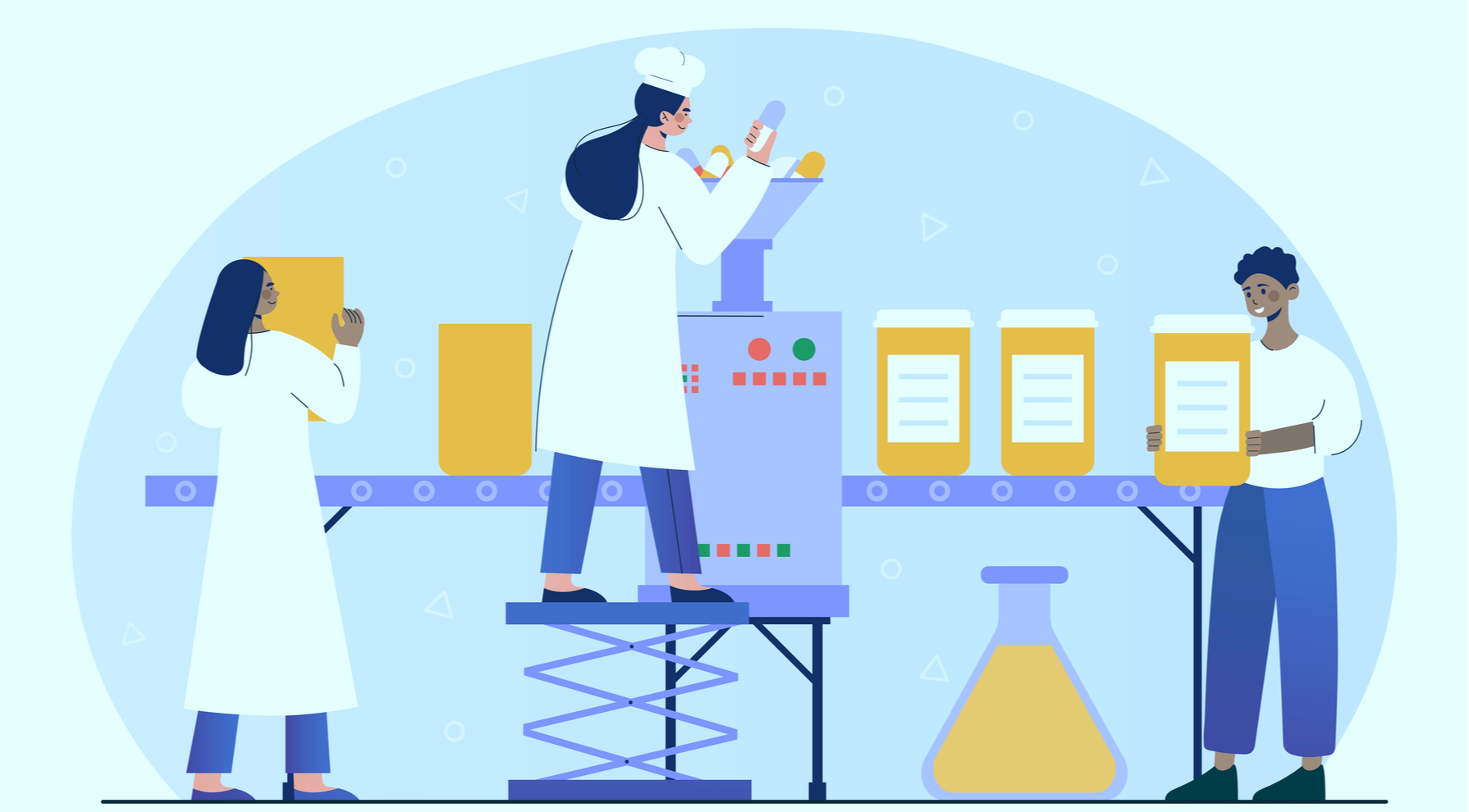Bringing Lean Up to Speed in the Pharma Industry

Blending lean with next-gen AI can radically improve supply chain decisions.
The pharma industry’s adoption of lean principles over the past decade has delivered mixed results. On the plus side, pharma companies have made substantial gains by applying lean to R&D and manufacturing processes – reducing waste, accelerating production, and improving quality control.
But on the downside, pharma companies haven’t realized the same successes in extending lean across the organization, especially in the broader supply chain. In many cases, results have been underwhelming when introducing lean and Six Sigma models across procurement, demand planning, inventory, distribution, and logistics.
Lean hasn’t delivered the end-to-end visibility that’s needed for supply chain optimization. In fact, supply chain visibility was the first priority for life sciences executives surveyed by LogiPharma, a pharma supply chain community. End-to-end visibility is needed to contain costs, accurately forecast lead times, respond nimbly to changes in supply and demand, and ensure customer satisfaction.
The visibility goal remains elusive. Pharma companies face the stubborn roadblock of supply chain complexity, demand and channel volatility, a proliferation of underlying IT systems, and rising volumes of data. Those challenges are only worsening in our hyperspeed digital world.
In addition, companies moving into biologics and biosimilars face additional challenges in the inherent complexity of sourcing materials and producing treatments based on living organisms. Lean and Six Sigma alone can’t address the underlying issues that undermine pharma supply chain performance.
Instead, manufacturers should look to pair lean principles with next-generation technology designed to process large amounts of changing data.
Lean’s Limitations
The problem is that lean and Six Sigma, as process methodologies, do little to leverage the data that’s essential to optimizing the pharma supply chain. Managers are still relegated to using imperfect data and conventional tools – ERP systems, planning applications, and spreadsheets – to make critical supply chain decisions.
This poses two issues.
Supply chain data isn’t real-time data. It’s static, and often outdated by days, weeks, or months. The result: without definitive real-time data consolidated from multiple sources, the company can’t intelligently respond to a disruption or a major shift in demand. It lacks the agility required to address both strategic and tactical threats and opportunities.
The extent of manual human work is extreme. Pharma supply chain teams spend untold hours manually piecing together information from disparate systems and running analytics in a spreadsheet or business intelligence tool. This slow, imprecise, and very costly process provides the basis for best-guess decisions that, unsurprisingly, often miss the mark.
A lean approach to pharma supply chain data management and decision making can certainly help pharma reach the goals of supply chain visibility and optimization. Lean and Six Sigma are sound frameworks, proven in multiple industries since lean concepts were pioneered by Toyota as far back as the 1930s.
With an emphasis on waste elimination and efficiency, lean and Six Sigma are well-suited to help pharma companies achieve multiple objectives across the supply chain:
- Cost reductions in procurement, manufacturing, inventory, and distribution
- Faster production and order fulfillment
- Greater accuracy in data, processes, and forecasting
- Improved ability to respond to changes and disruption
But for lean to truly succeed, it needs to be coupled with next-generation technology purpose-built to process vast volumes of fast-changing data and make intelligent recommendations. Together, a disciplined lean framework and digital transformation open new frontiers for pharma to radically improve the quality of supply chain decision making.
Coupling Lean and Artificial Intelligence
Today, top pharma companies looking for supply chain optimization are turning to a technology known as Decision Intelligence, which blends internet-scale compute power, a virtualized enterprise data store, and artificial intelligence/machine learning (AI/ML).
Deloitte is among the industry experts to believe that the pharma supply chain is ripe for transformation with AI.
In a recent biopharma report, Deloitte stated, “Biopharma manufacturing and supply chains produce vast amounts of real-time data that for years have been underutilized. However, AI technologies are poised to impact these processes through real-time data processing and decision making that can make supply chains truly data driven.”
Bringing together lean and Decision Intelligence accomplishes several things:
- Decision Intelligence creates a near real-time cognitive data layer with thousands of Google-like data crawls each day across multiple internal and partner applications. That generates timely, accurate information with a high degree of granularity to respond to ever-changing conditions.
- AI and ML algorithms deliver exception management alerts and respond to queries. Decision Intelligence delivers recommendations on optimal actions in various scenarios – addressing inventory shortage, responding to a regional demand spike, recalculating lead times, etc.
- Lean and Six Sigma processes can be embedded and digitized in the cognitive data layer to help ensure waste-reducing workflows and collaborations across stakeholders. Decisions made are constantly monitored for outcomes based on self-learning capabilities in AI.
It’s a breakthrough shift from status quo models involving homeostatic, monolithic systems. Supply chain managers no longer face the Sisyphean dilemma of trying to manually manage and analyze tremendous quantities of data. Machines take over that heavy lifting, liberating personnel to focus on higher-level strategic planning and anomalies that demand human consideration.
Reducing Response Time from Months to Days
The ultimate payback is in truly data-driven decisions. For example, consider lead time forecasting. There’s invariably a sizable gap between planned and actual lead times due to the unavailability of real-time data, inordinate manual work, and changes in upstream and downstream signals that are difficult to track.
As it is, it can take a pharma company weeks or months to respond to variance in planned and actual lead times and address unanticipated changes that triggered the gap. By then, opportunities to swiftly mitigate the root cause issue have disappeared.
Rooted in a lean framework with well-defined workflows, Decision Intelligence gives big pharma the real-time data and analytic depth that it’s been missing all along. Lead time variances can be detected in days or hours, and alternative measures put into action in days. Cost savings and revenue preservation can amount to hundreds of millions of dollars.
It’s not a pie-in-the-sky vision. Pharma leaders such as Merck KGaA are using Decision Intelligence for supply chain optimization. The innovators that capitalize on the opportunity will start small, experiment, and scale up under the leadership of a chief digital officer or team well-positioned to drive adoption.
They’ll also rethink lean strategies that have worked well in manufacturing by extending those proven principles across the broader supply chain in a next-generation technology framework.
This article was originally published in Pharma Manufacturing.






